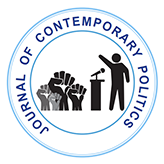


Journal of Contemporary Politics
Year: 2025, Volume: 4, Issue: 2, Pages: 54-61
Original Article
P S Abhishek1,∗
1Research scholar, Department of Political Science, University of Kerala, Kerala, India
*Corresponding Author
Email: [email protected]
Received Date:09 June 2025, Accepted Date:18 June 2025, Published Date:24 July 2025
The Israeli-Palestinian conflict is one of the world’s longest-running conflicts that has been continuing for several years. Every Israeli administration since 1967 has poured copious amounts of money into building and expanding settlements in the Occupied Territories, both in terms of the area they occupy and the population they house. Over 380,000 Israeli citizens currently live in West Bank settlements, including those in East Jerusalem, as a result of this policy. Benjamin Netanyahu has heavily influenced Israeli policy on the occupied Palestinian land. He has made several statements regarding the need for increased settlements in the occupied territories. Upon taking office as Prime Minister in 2022, Netanyahu declared that his government's main strategy would be to advance and foster settlement in all parts of Israel. He used various mechanisms to increase the settlements, which included building military outposts and providing high-level amenities to the Israeli people living in the settlements, and he was very keen to create an apartheid system there. His decision on settlements has caused tension with Palestinian leaders and sparked strong international criticism. Many nations and organisations see the spread of settlements as a threat to peace and a breach of international law. A forceful and assertive stance has frequently defined Benjamin Netanyahu's approach to Israeli settlements. Netanyahu’s position reflects larger ideological and strategic considerations inside Israeli politics.
Keywords: Israel, Palestine, Settlement, Benjamin Netanyahu, Occupied territories
© 2025 Published by Bangalore University. This is an open-access article under the CC BY license (https://creativecommons.org/licenses/by/4.0/)
Subscribe now for latest articles and news.